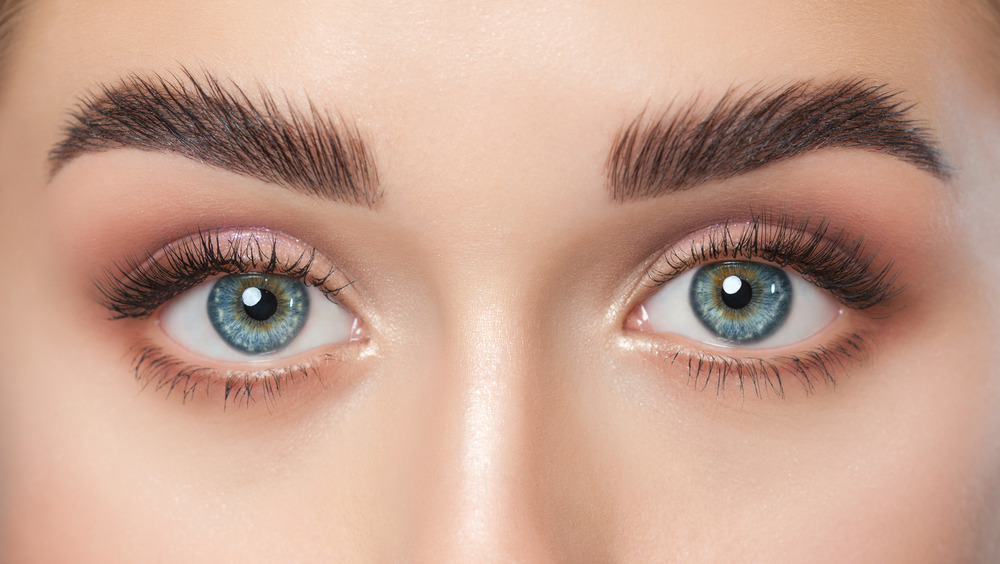The Genetic Mutation That Could Be Responsible For Blue Eyes
It's likely that many of us have encountered a Mendelian genetics chart in school. You know: dominant genes (big B), recessive genes (little b), and a nice and neat chart such as the one found on Write Science explaining all the probabilities behind inheritance. This method of defining genotypes (genetic makeup) and phenotypes (what trait the genes produce) is super simple, but fundamental to understanding why, say, your child's nose looks suspiciously like your grandma's on your father's side. In reality, even the inheritance of simple traits is fairly complicated, as an article in the Journal of Human Genetics explains.
Eye color, for instance, is attributed to 16 different genes, specifically two genes on chromosome 15 called HERC2 and OCA2. In the end, one set of gene-guided proteins is responsible for melanogenesis (creating melanin) in melanocytes (melanin cells) in the eyes, and another set of proteins is responsible for how the melanin develops over time. In the end, as is commonly known at this point: more melanin equals darker eyes, as melanin restricts the range of visible light reflected back from irises.
It's taken quite some time to go from Gregor Mendel's 1860s original work to these current results, as overviewed in Genetics Generation. After all, people used to believe that children's eye color sort of blended from their parents, like paint on a palette. It took quite some time, however, for the first blue-eyed human to even exist.
All blue-eyed people are related to a single person
At present, Finland and Estonia have the most blue-eyed people in the world — 89 percent, according to World Atlas. That figure plummets to the next highest country, Ireland, at 57 percent, and then Scotland, at about half. The US? Only 16.6 percent. This may give us a clue about the spread of the genetic mutation that causes blue eyes. Anecdotal evidence described in a Reddit thread indicates that an order of 9th-century Vikings called Varangians may have helped blue eyes to proliferate. Their travel-and-trade route, outlined on Short History, took them from Sweden down through the Byzantine Empire in Eastern Europe and Asia Minor.
The first blue-eyed person, though? Likely from the Black Sea region, as the Independent outlines, which includes Turkey, Ukraine, Romania, and others. This happened only as recently as 8000-4000 BCE, Science Daily says. (Bear in mind that our species, Homo sapiens sapiens, has been around about 200,000 years.) Before then, "we all had brown eyes." The one single blue-eyed person spawned all the rest of those with genetically anomalous blue eyes, due to some unknown advantage possibly related to daylight or sexual selection, at a time when agriculture was first developing.
As for the genetic mutation itself? There's a simple "switch" on the aforementioned OCA2 gene that, when off, limits the variation in melanin production, which produces lighter-looking eyes. All people with blue eyes have this same genetic mutation, hence the "common ancestor."

